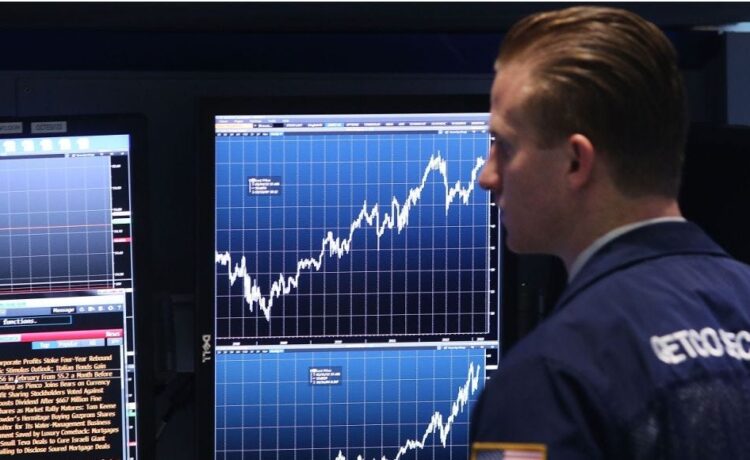Global X has been an under-the-radar winner during this year’s artificial intelligence revolution.
Instead of creating semiconductors like Nvidia (NVDA) or chatbots like Alphabet (GOOGL), the exchange-traded fund (ETF) provider develops investment products that offer exposure to those AI leaders. The $48 billion firm offers the largest AI-focused ETF, the Global X Robotics & Artificial Intelligence ETF (BOTZ), and two other top-five AI ETFs, according to ETF.com.
As investors have scrambled to get exposure to AI stocks this year, the BOTZ ETF has risen from $1.6 billion in January to about $2.4 billion in net assets today, while the Global X Artificial Intelligence & Technology ETF (AIQ) has about $848 million net assets — up nearly seven-fold from $125 million in January, according to Global X.
Although some AI stocks have risen to mind-bending levels after crushing the market in 2023, Global X investment chief Jon Maier doesn’t see that momentum slowing anytime soon.
“The story on AI still has legs,” Maier said in a recent interview. He later said the following about AI: “It’s hard to say if the spending is happening. The bottom-line impact, is that happening yet? I think it’s a little early, but it’s probably not too far off. I think it does play out over multiple years, it does have a lasting impact, and it does change the complexion of many different things.”
Investors seem to have few doubts about AI’s staying power. Skeptics are mainly focused on AI’s impact and the lofty valuations stocks tied to it are currently commanding, especially in a new era of higher-for-longer interest rates.
Nearly all of this year’s top-performing stocks have some connection to AI, including Nvidia. The S&P 500’s year-to-date leader is richly valued but has a massive first-mover advantage like Tesla did in the electric vehicle market, Maier said. He believes that edge may be unshakable.
“It’s a super high valuation for sure, but it’s trading on, they’re the only game in town for the chips for generative AI,” Maier said. “The backlogs are huge. Their earnings, obviously, each quarter just completely blow out expectations.”
Don’t sweat valuations — but pay attention to growth and interest rates
While Maier is a big believer in AI, he sees plenty of opportunities outside of high-flying stocks tied to the technology. Contrary to the notion that US stocks are expensive, the investment chief thinks they’re fairly valued, with the possible exception of a handful of mega-cap tech firms.
The seven largest stocks in markets are up an astounding 102% through December 11 while the other 493 components of the S&P 500 are up 9.9%, Maier noted in recent market commentary.
“If you remove those, valuations aren’t out of whack, from our perspective, because there hasn’t been broad participation in this rally,” Maier said.
Given his glass-half-full opinion of stock valuations, it follows that Maier is mostly upbeat about US equities heading into 2024, even though he’s less positive about economic growth.
The consensus among investors is that the US will avoid a recession in 2024, and if there is a contraction, it will be mild and brief. Maier held off on making a definitive prediction about what will happen to the economy, but he firmly believes that above-trend growth won’t last long.
“We’re expecting slower growth,” Maier said. “We’ve been talking about the consumer having to slow down because of rising credit card balances, lower savings rates, but I think there’s other dynamics that are not necessarily captured by data.”
Maier added: “If you have slower growth or a slight negative growth, does it truly matter? I don’t think so. It’d be so well-telegraphed that I don’t think it matters necessarily what you call it.”
Interest rates are worth monitoring closely next year, Maier said, considering how they can significantly impact stock valuations and economic growth. He believes rates are near their peak, but isn’t banking on cuts from the Federal Reserve until mid-2024.
“We’re going through a period of normalization of rates, and the market has to get used to higher rates,” Maier said. “We’re going to be at higher for longer, from my perspective, longer than the market expects.”
12 smart places to invest in 2024
Investors would be wise to have some exposure to stocks connected to artificial intelligence, Maier said, including industry pioneer Nvidia.
There are 10 other parts of the market that Maier is either bullish on or thinks have momentum.
Two of those are tangentially related to AI, Maier said: cloud computing and cybersecurity.
“I think companies have no choice but to spend in those areas,” Maier said. “Lots of data; more cloud services. Lots of data; more cyber threats. So they just seem naturals that fit together.”
Investors interested in those themes can get exposure to them through the Global X Cloud Computing ETF (CLOU) and the Global X Cybersecurity ETF (BUG), or alternatives like the First Trust Cloud Computing ETF (SKYY) and the iShares Cybersecurity and Tech ETF (IHAK).
Small caps are also a strong bet due to their cheap valuations and seasonal trends, Maier said.
Global X
“They’re still trading at a discount despite the recent rally,” Maier said. “And so I think they’re relatively cheap due its historical averaging about 12%, and small versus large remains 29% below its average.”
Popular small-cap ETFs include the Vanguard Small-Cap ETF (VB) and the iShares Core S&P Small-Cap ETF (IJR).
The investment chief also likes equities in emerging markets, especially those in India. Falling interest rates should give the broader group a boost, Maier said, adding that the world’s biggest country by population has several tailwinds as it attracts investment from foreign companies.
“Given that the dollar’s weakened, the demographics in India, the rise of the lower parts of the economy into middle class, provides lots of opportunity in India,” Maier said.
Global X offers the India Active ETF (NDIA), and competing ETF providers have the iShares MSCI India ETF (INDA) and Franklin FTSE India ETF (FLIN).
When asked which of Global X’s are attracting attention right now, Maier pointed to those tied to energy, including uranium, as well as infrastructure firms and master limited partnerships through funds like the Global X MLP & Energy Infrastructure ETF (MLPX), the Global X Uranium ETF (URA), the Global X US Infrastructure Development ETF (PAVE), and the Global X MLP ETF (MLPA), respectively.
“We have a fund, URA, which has gained a lot of interest, and I think that’s largely a function of the push towards reduced emissions,” Maier said. “And technically, nuclear power is defined as green energy, assuming no accidents of course. And they’re somewhat of a hedge as well.”
Lastly, Maier cited covered-call products, including Global X’s S&P 500 Covered Call ETF (XYLD) and Nasdaq 100 Covered Call ETF (QYLD), as a top idea if markets are range-bound next year. A covered-call strategy revolves around generating extra income by selling call options on equities, though it can lead to missed opportunities if the underlying stock rallies significantly.















